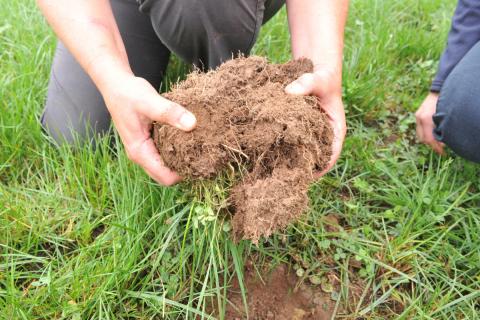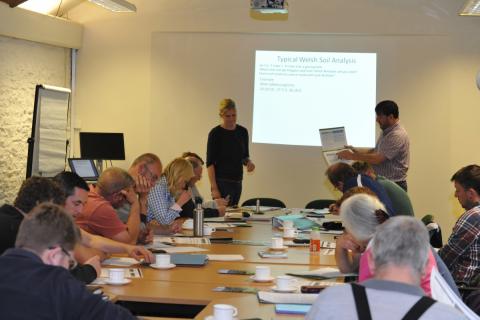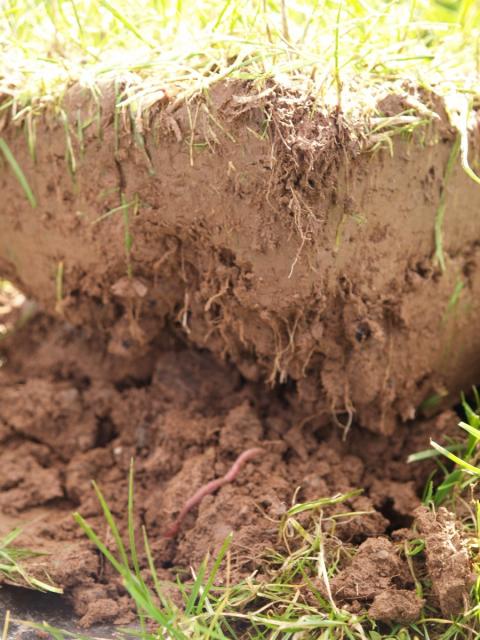18 October 2018
Improving the structure, organic matter and nutrient status of soils could help many Welsh farms become more productive amid agricultural support reforms.
During a two-day Farming Connect Master Soils workshop, farmers were advised that they must optimise the potential of on-farm resources as they prepare to farm without direct payments.
The most important of these resources is soil, suggested Charlie Morgan, who led the workshops in conjunction with fellow grassland specialist Chris Duller.
Soils must work to their potential to allow farms to achieve higher and more consistent grass and crop yields and quality, Mr Morgan told participants at the workshop held at Coleg Gelli Aur, a Farming Connect Innovation Site near Llandeilo.
“Chemical, physical and biological are the three cornerstones of soil husbandry,’’ he said.
“You can manipulate grass growth with soil management and this influences the management of your livestock.
“Introducing the best livestock genetics is all well and good but if animals are not getting the right feed because soil management is poor you are not getting the best from that investment.’’
As a first step, Mr Morgan recommends farmers establish the status of a soil’s health and set targets for improvement based on the results.
Routine soils inspections should be undertaken in combination with gathering data to benchmark impacts of farm operations.
Soil testing can cost as little as £10 a field and provide farmers with this information.
Once the chemistry is known, a nutrient management plan can be developed to properly apply nutrients generated on-farm and to calculate precisely how much manufactured fertiliser is needed to balance these, said Mr Morgan.
As important as analysing soil is testing slurries and manures to establish dry matter content, Mr Morgan advised.
Livestock slurry is an important source of nutrients for grassland and arable crops but over-applying not only breaches regulations, it damages earthworm populations too.
“Excessive slurry prevents systems from working,’’ Mr Morgan warned.
How slurry is applied influences its effectiveness and environmental impact.
Shallow injection application reduces ammonia emissions by 73% but for band application it is only 26%.
As important to its effectiveness is when it is applied. Applying 3,500 gallons/acre of 6% DM slurry in October provides 17kgN/ha – worth £12.24/ha - while applying in the optimum month, early March, provides 40kgN/ha, worth £28.80/ha.
Master Soils also covered aspects of health and safety, in particular the storage of chemicals.
Sheep farmer Jane Williams, who farms near Aberaeron and was one of the 20 course participants, said this information was valuable.
“It was a very useful exercise to learn which chemicals should not be stored next to each other,’’ she said.
Another participant, Pembrokeshire dairy and arable farmer Mark Evans, said he would be putting into practice advice he had gleaned from the course.
“We do a lot of ploughing on our farm but it is evident that this is causing compaction because the earthworm populations aren’t where they should be so this course has focused my mind on alternatives,’’ said Mr Evans, of Berryhill, Newport.
Funding for the project has been provided by the Welsh Government’s Rural Communities Rural Development Programme 2014-2020.



